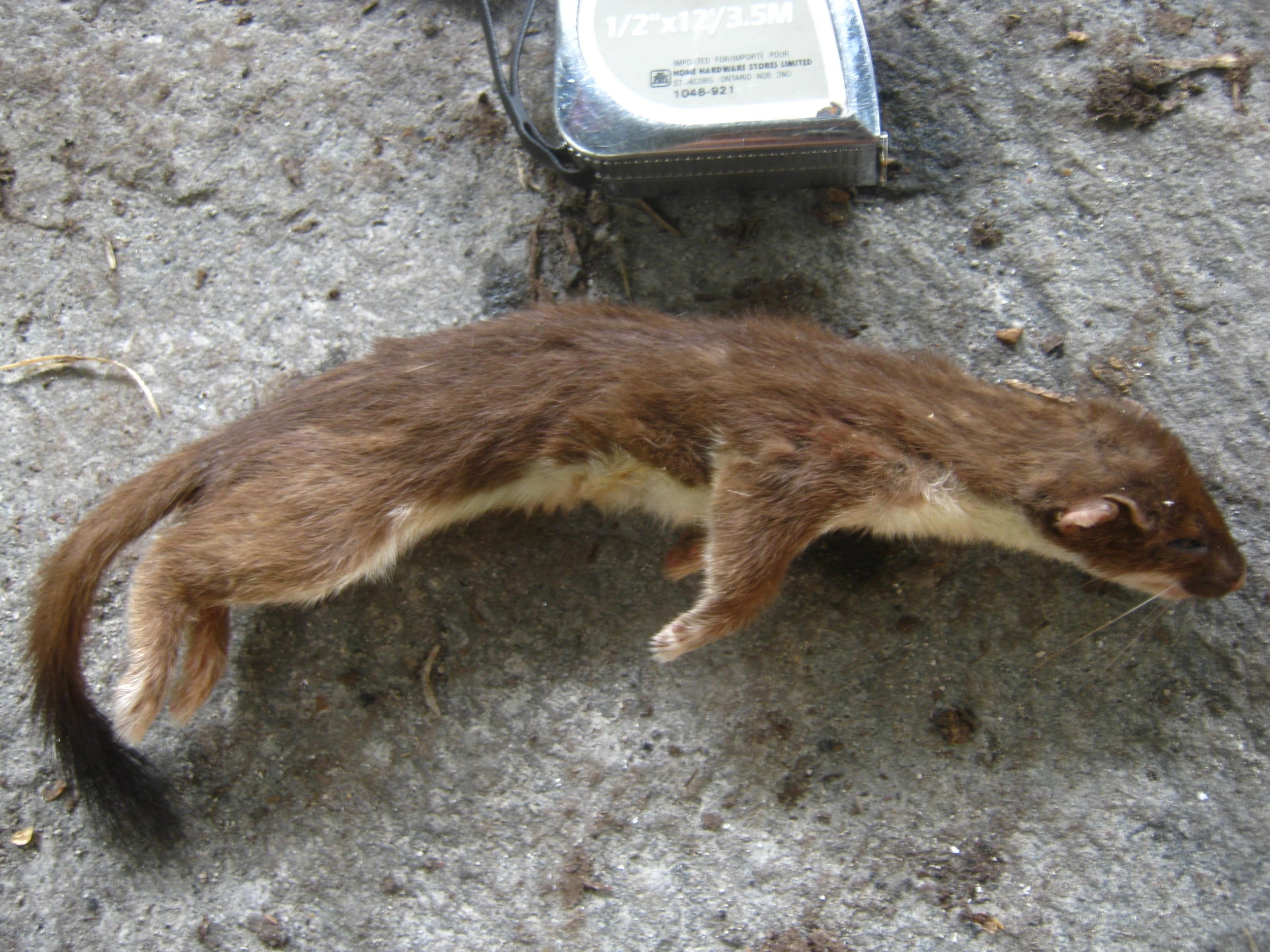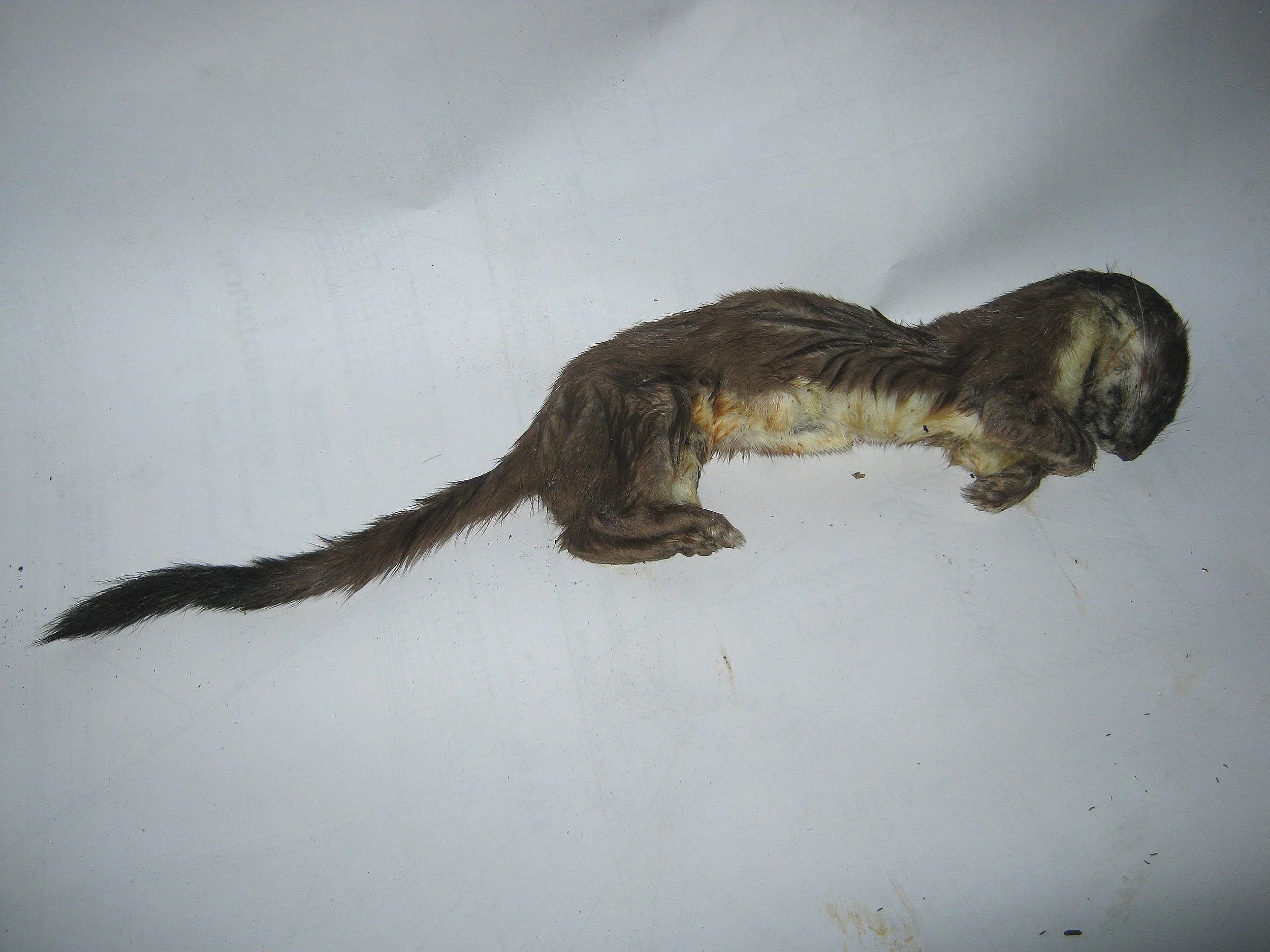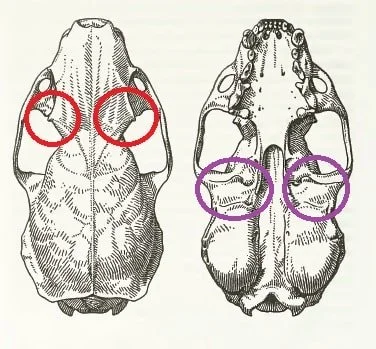Which Weasel Was It?
A few years ago, one of my former students called me over to the fire pit to show me something his cat caught. I love it when the kids bring in dead animals because it gives us time to really study them in a way that we wouldn’t otherwise get the chance to. I came over and was totally surprised. A weasel! How cool. I had only seen one other dead weasel and that was a few years before, killed by a dog on the trail to work. This one my student was showing me had been dead for a day or two, and had been left on his porch, waiting for him to bring them in. While taking a ton of bad photos, I thoroughly examined the animal and found possible bite marks just behind the left armpit, but to be honest, I didn't know how to examine an animal then as well I do now. My student kept asking, over and over, “What kind of weasel is it? What kind of weasel is it?” I looked them over and told them I wasn't certain, but my guess was a Short-tailed Weasel (Mustela erminea) based on the length of the tail. Some of the other instructors chimed in that it appeared to be a lengthy tail, but they weren't certain of a specific i.d. either. I asked my student's plans for the animal and he said he was going to skin them. I agreed that that would be a good way to honour and keep the memory of the animal alive, and asked if I could keep the skinned head afterwards so as to deflesh it and clean the skull. He said yes, and went to go get his knife.
A couple of days ago now, I was organizing some of the photos in my “legendarium” or where I archive images and sounds of my encounters with the more-than-human world. As I was creating a new folder for some Long-tailed Weasel (Neogale frenata) tracks I had photographed, I came across these photos again. I decided I should go over the signs once again, now incorporating more that I know about Long-tails and Short-tails and try and i.d. this individual to species.
Tail Length
I first looked at size of the tail relative to the rest of the body. It is written in their names so it must have bearing on species distinctions. A Short-tailed Weasels tail is 44% or less than the length of their head and body, while a Long-tailed Weasels tail is between 44-70% of the length of their head and body. A Least Weasels (Mustela nivalis) tail is less than 25% of the length of their head and body. Also when considering the tails it is important to remember that the Long-tailed, and Short-tailed both have black fur on the ends of their tails, while the Least does not. With these two field marks in mind and comparing with the photo above, I have to go with 2 points for the Short-tailed Weasel : a black tipped tail, under 44% of the length of their head and body.
Distribution range
The distribution range of both Long-tails and Short-tails include my region of Southern Ontario, but the Least Weasel seems to live everywhere except an exclusion zone of Southern Ontario. I wonder if they once lived here, but due to build up in development and human activity if they have been pushed out? Unknown, but it would seem unlikely as the two larger species still inhabit the area. More research is needed here.
Foot colour
Next I looked into the feet, as I had heard that Short-tails have brown legs with white feet while Long-tails have brown legs, and brown feet with white undersides. The animal pictured above had brown legs, with brown and white feet with brown undersides. This would point to Long-tail. So 1 point for... wait. Who says this? Where is it written that this is a reliable identification feature? My go to source for mammal info is Donna Naughton's Natural History of Canadian Mammals and although this is what is pictured in the paintings (both Short-tail, and Long-tail paintings by Julius Csotonyi) in the book, Donna does not mention foot colour as a distinguishing feature for either animal. I also checked Mammals of Ontario by Tamara Eder, but she confirms that Short-tails have white feet, even in Summer. It does seem like a few websites make the same claim, that Short-tails have white feet (1)(2)(3 check figure 2.), but not all websites with species descriptions distinguishing the two larger weasels include this feature. I am going to role with inconclusive.
I was totally uncertain of proper identification. Unsure of where to turn for a clear distinction between species, I ended up looking for and finding an aged image from my collection of the same dead Long-tail killed by a domestic dog (Canis familiaris) on the trail on my way to work as mentioned above.
The tail on this individual was quite long, definitely within the 44-70% range, and it had a black end. The range was seemingly obvious, found dead on the trail to work, so unless someone had encountered this dead weasel somewhere else and then brought the corpse to the trail, this animal would be/was found in my range of Southern Ontario. The feet were brown with brown undersides on brown legs. With this photo, and the scanty definers above, I'm going to assume that the weasel pictured in the first photo is a Short-tailed Weasel... unless there is any other evidence I have laying around that can guide me...
What about the skull? The Skull! Every species has a unique skull. Some are very similar, but there are often differentiating characteristics hidden in the folds and foramina waiting to be observed and understood. I had cleaned it years ago, and now it was coming to pass that the skull was going to be useful in making the identification... I hoped.



The wee skull came in at 45 mm (1¾ in.) which is actually more annoying than insightful. According to Mark Elbroch’s Animal Skulls book, the range for a Short-tailed skull is 33.9 - 46 mm (1 3/10 - 1⅘ in.), and for a Long-tailed skull the range is 38.4 - 53.6 mm (1½ - 2 1/10 in.)!!!
Post orbital processes circled in red on left. The gap between the auditory bullae and the mandibular fossa circled in purple on right.
“Post orbital processes are small and triangular” on the Short-tail vs “well developed and triangular” for the Long-tail. This refers to the small pointy sitcky-outey bits coming from the medial (the middle) side of the skull which delineate the eye sockets from the rest of hole defined by the cheek bones (the rest is where the masseter muscles go through). Mark also writes that the auditory bullae (where the ear drum is located) are situated closer together on a Short-tail than on a Long-tail, but this would only really be helpful if I could compare across skulls. I guess from the images provided in the Animal Skulls book, they do look closer than the Long-tail.
Another interesting and maybe defining feature of the auditory bullae that I can see through comparison with the images in the book is that there is more of a gap between the auditory bullae and the mandibular fossa on the Short-tail. This only came to my awareness while getting ready to throw the book across the room for not being helpful. I guess I just need more patience…
So, again, in light of the tail, the feet, the range, the post orbital processes, and the auditory bullae, I am going to settle with Short-tailed Weasel.
Why the hell would I do all of this to confirm something that could be confirmed in one look at the first image? Really it’s because there was a lot of conflicting identification features (colour of the feet being the big one, but I didn’t even get into whisker length!), and I really got confused. Sometimes a lot of information from many different sources can be overwhelming for me and I don’t know who is right or what sources are the most accurate. It’s also true that life is strange and weird and will find multiple ways of challenging simple identification. Sometimes we can’t just look at someone and think we know who they are just because they wear certain shoes, or the colour of their hair. Sometimes we have to take the time to look a little deeper and explore more, ask some questions and just observe a bit longer. I’m glad I did, too.
To learn more :
Animal Skulls by Mark Elbroch, Stackpole Books, 2006.
Natural history of Canadian Mammals by Donna Naughton, University of Toronto Press, 2012





